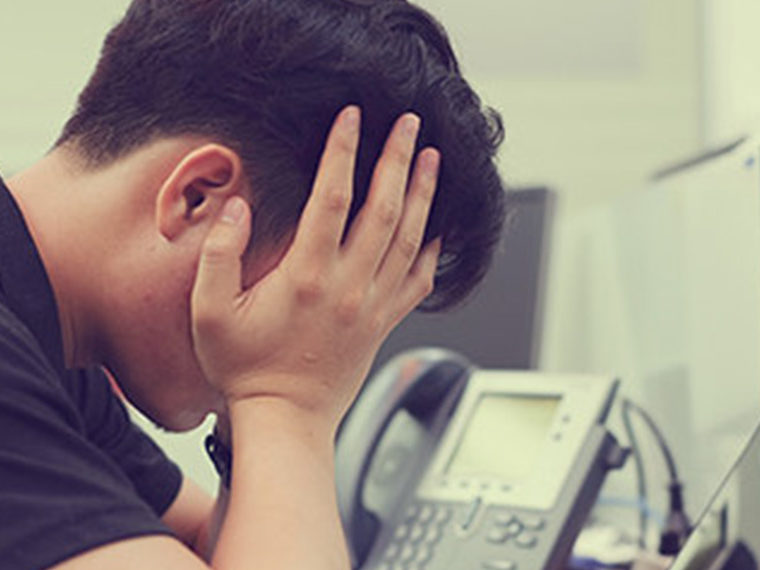Nurses (and women) rate highly for warmth; lawyers, not so much
Efforts to reduce employment discrimination inevitably run into firmly held stereotypes not only about gender and race but also about individual occupations — and who is best suited to hold those occupations.
The study of the problem has ranged across many classifications of occupational stereotypes: agency versus communion in some research; likability, honesty, intelligence or responsibility in other papers. In a paper published in the Journal of Vocational Behavior, UCLA Anderson’s Joyce C. He and University of Toronto’s Sonia K. Kang, Kaylie Tse and Soo Min Toh seek to simplify the discussion by categorizing occupations — and people — by their perceived warmth or their competence.
Opt In to the Review Monthly Email Update.
These two qualities are “universal dimensions of social perception,” according to the authors, with warmth encompassing tolerance, good-naturedness and likability, and competence signaling competitiveness, intelligence and respectability or prestige.
Warmth and Competence Can Aid Research on Occupational Stereotypes
The authors suggest using these two measures can help unify and extend research on occupational stereotypes. Instead of simply breaking down along the lines of “good-bad” or “female-male,” using warmth and competence allows for the “integration of gendered and nongender-related occupational stereotypes, which to date have remained separate.”
The researchers first asked 55 participants to help them generate a list of occupations.
Then, a second group of 1,046 participants rated each of the 60 occupations on both warmth and competence, using a scale of 1 (not at all) to 7 (extremely). The authors then took these stereotyped jobs and mapped them against a federal data set called “O*NET,” which describes the attributes of hundreds of different kinds of jobs. They looked at two O*NET classifications:
Occupational interests, whether a work environment is:
- Realistic: requiring strength, problem-solving, little interpersonal communication, such as an electrician or a farmer
- Investigative: task-oriented and mentally challenging, such as a programmer or a doctor
- Artistic: focused on self-expression, such as a writer or a musician
- Social: requiring collaboration and communication, such as a nurse or a teacher
- Enterprising: emphasizing leadership and decision-making, such as a manager or a lawyer
- Conventional: follow clear rules and procedures, such as a librarian or an accountant
Work values:
- Achievement: results-oriented occupations that play to a worker’s strength, such as a computer programmer or a salesperson
- Independence: occupations allowing for creativity and individual work, such as an engineer or a chef
- Recognition: prestigious roles with opportunities for leadership, such as a lawyer or a CEO
- Relationship: noncompetitive, service-oriented occupations, such as a bartender or a bus driver
- Support: jobs with supportive management
- Working Conditions: occupations that offer job security, such as a librarian or a welder.
The interests and values in the O*NET database corresponded with warmth and competence measures produced by the initial survey. For example, jobs rated by O*NET as investigative “seemed most related to perceptions of competence,” while social professions overlapped with those rated highly on warmth. Interestingly, the authors note suggestive evidence that “jobs requiring leadership and persuasion are seen as less warm,” such as lawyer or politician.
For work values, occupations rated highly on competence were correlated with achievement, independence and recognition, demonstrating that “occupations involving highly motivated and goal-oriented employees are seen as more competent than jobs requiring ongoing support or supervision.” Those jobs that rated highly on warmth were correlated with jobs that value relationships.
The authors then looked at the composition of the U.S. labor force to see whether ratings of occupations by warmth and competence predicted representation by demographic groups, based on stereotypes about those groups’ warmth and competence.
They used Labor Department data for 54 occupations (no data were available for a handful of occupations) to analyze what share of a given occupation’s employees are: women, Black, Asian or Hispanic/Latino.
They found demographic groups overrepresented in jobs for which the stereotype aligns with the group’s warmth and competence ratings.
Stereotypes on Racial Lines Lead to Lower Warmth, Competence Ratings
“Jobs rated as warm were positively correlated with the percentage of female workers within a position,” such as child care worker or nurse. Asian people, who are perceived as highly competent and medium in terms of warmth, were “more highly represented in occupations related to science and math.”
Stereotyping of Black and Hispanic people penalize them on both competence and warmth, the authors report. Black workers had higher representation in fields with low warmth and competence ratings, such as bus driver or security guard. Hispanic people, also stereotyped with low scores on competence and warmth, are more highly represented in occupations that have midlevel scores on both dimensions, such as landscaper or welder, relative to Black workers.
As the authors note, these stereotypes are with us from an early age. “Even children hold stereotypes about occupational groups,” they note. These stereotypes, internalized at a young age, may shape people’s ambitions and aspirations depending on their own self-perception and internalized stereotypes. Alternatively, for someone who grows up to be in a decision-making role, the stereotypes may influence whom they decide to hire for a specific type of job.
This research suggests that countering these stereotypes (by, for example, stressing the warmth involved in lawyering or the competence necessary to be a quality child care worker) can help promote congruence between an occupation and an underrepresented demographic group in that field.
Featured Faculty
-
Joyce C. He
Assistant Professor of Management and Organizations
About the Research
He, J., Kang, S., Toh, S., and Tse, K. (2019). Stereotypes at work: Occupational stereotypes predict race and gender segregation in the workforce. Journal of Vocational Behavior, 115, 103318. https://doi.org/10.1016/j.jvb.2019.103318





